“Before the plant upgrades you couldn’t even see the bottom. Just looked like green pea soup. All this vegetation wasn’t here. The cattails weren’t here. Now, It’s absolutely beautiful.”
—John Light, area operations manager, Nogales International Wastewater Treatment Plant
Just half a mile from his home in Rio Rico, John Light brings his dog to play in a stretch of the Santa Cruz River. “He’s like a big bulldozer;” John laughs, “he just goes plowing through the water, it’s a riot.” John adds, “I feel totally comfortable with him in there. I know what’s in it. I know what we do to treat it.”
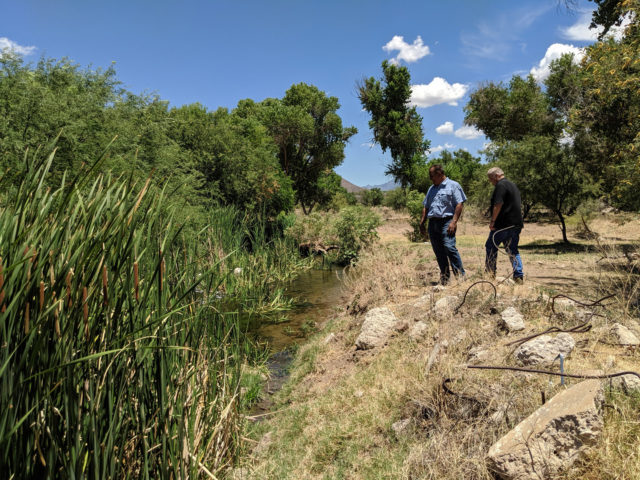
The treatment process he refers to is about as close to alchemy as you get in real-life: wastewater, or sewage and stormwater, has been transformed into crystal clear, life-supporting water. John is the area operations manager at the Nogales International Wastewater Treatment Plant, and today he’s also the tour guide of this federal facility. He’s showing us where this stretch of the Santa Cruz River gets most of its flow.
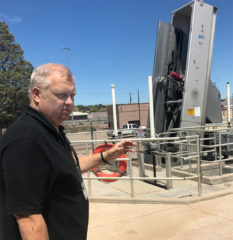
The tour begins where raw wastewater enters the facility. A conveyor belt with a large separating machine sifts slowly through the muck. We watch, waiting to see what it will pull out next. Sometimes it’s just a lone soda can, sometimes a large mass of tangled objects: bicycles, rags, baseballs, and Barbies—all of it wet, muddy and a sickly brown color. In this moment it is hard to imagine how this sludge will become a beautiful, clean river.
“Making clean water is not easy,” John explains, “Turning something that is, well, revolting, into something that’s so beneficial to everybody… It’s a process, it takes a lot of money, it takes a lot of thought, and it takes a lot of effort.”
Most of the wastewater comes from the other side of the border, in Nogales, Mexico, says John: “A lot of people ask me why we’re treating Mexico’s water,” John adds, “The main benefit to the United States is that we are retaining the water and treating it to U.S. [Environmental Protection Agency] water quality standards. The main benefit to Mexico is that they don’t have to build a treatment plant and maintain the infrastructure… So it’s truly a good benefit to both countries.”
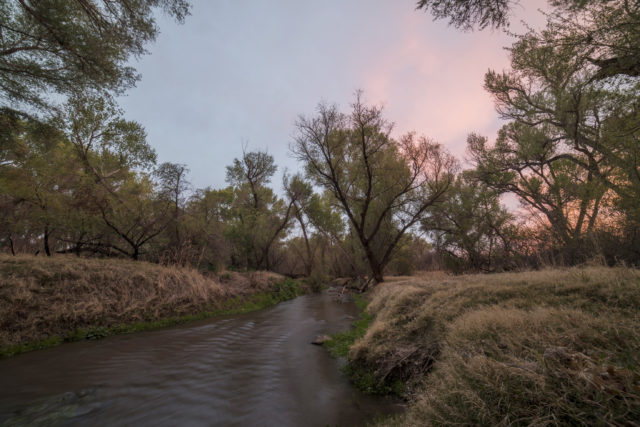
It has been this way since the 1950s and while there isn’t an imminent risk, this arrangement is not guaranteed to last forever. “The treaty says that Mexico could retain their water at any time with no notice,” John says. We need to continue these binational discussions to find a solution that secures water for the river in Arizona and improves the quality of life in Sonora.
John continues the tour, leading us through a series of laboratories and control rooms and onto a bridge overlooking pools of markedly lighter brown water. Here, we learn about the newest upgrade to the treatment plant. Under the bridge, microorganisms are transforming the toxic ammonia (a pollutant that can harm fish and wildlife) into less harmful byproducts among the constant rising and popping of air bubbles. The microorganisms produce inert nitrogen gas that harmlessly bubbles off into the atmosphere. This is an essential step toward the high-quality water that ultimately flows into the Santa Cruz River.
Ten years ago, the plant instituted a series of upgrades that improved wastewater treatment. The upgrades in 2009 reduced ammonia levels, a change that directly improved water quality in the river. John knew the upgrades would be good, but it hit home when he started seeing the return of fish, read the encouraging results described in Sonoran Institute’s Living River reports, and heard from others in the area: “I remember when we shut down the old plant and started the new plant, and I got a call from Sherry Sass with the Friends of the Santa Cruz River. She thought something was wrong because she was down there at the river and she could actually see the bottom of the river. She could see the rocks because the water was so clear. It was a stark, stark difference.” John says he was pleased to tell Sherry and other concerned neighbors that the change indicated a healthier river and was due to the newly modernized system.
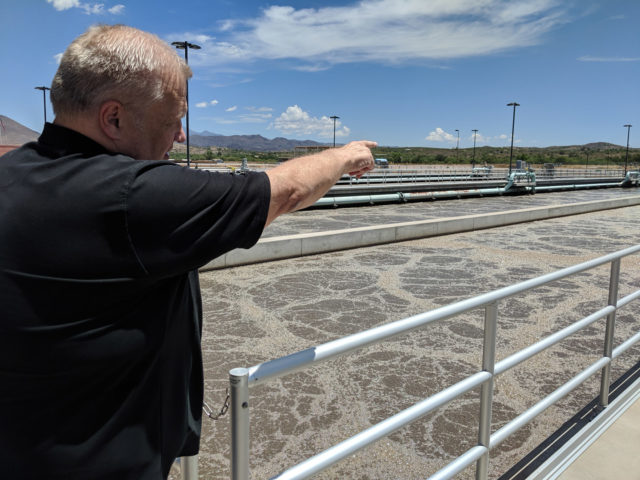
After passing through the final stage of treatment in the UV room, John shows us the way to the alchemist’s gold. John announces, “This is our final product.” The outfall is striking: a great big pipe is gushing clean water into the river channel, and a grove of trees surrounds the banks. Dragonflies are everywhere. The air is so fresh that it’s almost possible to forget the memory of that initial, sludgy conveyor belt that set this whole process in motion.
“See any fish, down there?” John asks and then immediately answers himself: “Oh, I think I see the minnows. Not sure if those are the endangered ones or not…. Before the plant upgrades, you couldn’t even see the bottom. Just looked like green pea soup. All this vegetation wasn’t here. The cattails weren’t here. Now, It’s absolutely beautiful.”
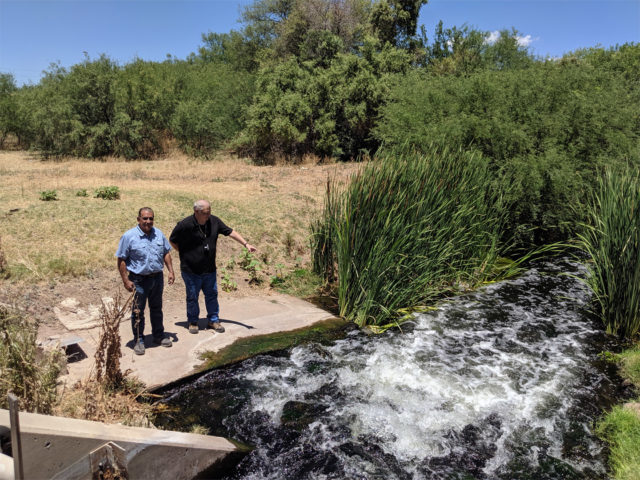
John says he hopes more people will visit the trails along the river, and more school groups will come to witness the magic occurring at the treatment plant. When asked about which aspect of the process he’s most proud of, John speaks to the big picture. He talks about how parts of the river disappeared during his mom’s lifetime. Yet today, from his own back porch, John can look down on the river he helps to restore. He hopes that future generations will not know of a time where there wasn’t a thriving river, and he knows that a binational solution will be the first step towards making this a reality. For now, though, John will continue his work to restore and connect others with the river he loves for future generations of dogs and humans alike to enjoy.
This post is part of a a series of community voices about the Santa Cruz River.
Read the other posts by clicking the links in the introduction: When You and the River Meet
Blog series by Amanda Smith, Program Coordinator.
Copy-editing and audio-editing services donated generously by Nicole Cloutier and Moises Munoz.
